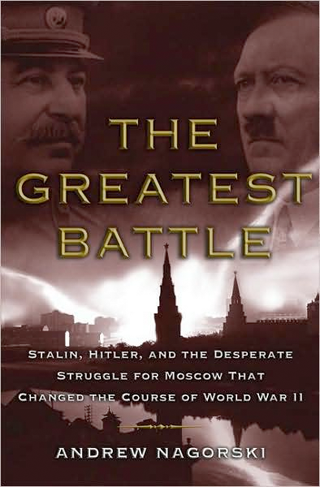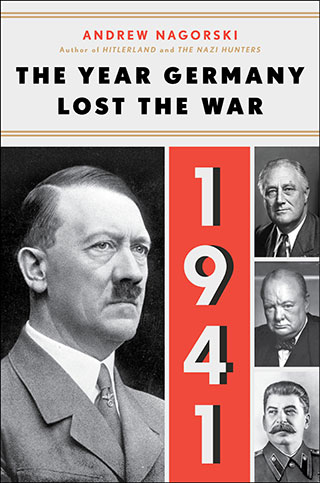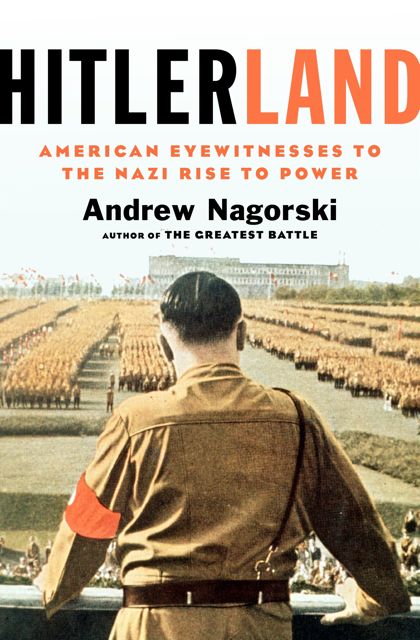Remember in Lost in Translation, the lovely film about two Americans adrift in Tokyo, how disoriented Bill Murray and Scarlett Johansson looked? There they were in their rooms at the soaring Park Hyatt, their elevation only accentuating the disconnect between them and the citys inhabitants, far below. Well, Ive stayed at the Park Hyatt Tokyo and felt some of the same disconnect. But when I recently checked into Shanghais much newer Grand Hyatt, I felt all of it. No, double or triple that. Its not merely that Shanghais Hyatt is the tallest hotel in the world, occupying the fifty-third to the eighty-seventh floor of the futuristic Jin Mao Tower (its Tokyo counterpart commands the top fourteen floors of a fifty-two-story building). Its also that the Shanghai I viewed from the windows of my room or from the Cloud 9 bar, on the eighty-seventh floor, was completely different from the city I first visited a quarter of a century ago. I felt like an astronaut peering down at a strange planet.
Everybody had warned me to expect huge changes in Shanghai, and I had read enough about this economic showcase of the new China to believe that I was prepared for what Id see. But I was wrong. To begin with, theres the sheer volume of recently erected skyscrapers stretching for miles in every direction in this city of 17 million people. Then there are the new highways, bridges, museums, designer stores and topflight restaurants and hotels. The architecture ranges from the high-end to the tacky, with an overdose of gaudy neon lights, but the overall impression is simply breathtaking. It just knocks your socks off, what theyve done: its so big, so marvelous, says James R. Lilley, a former U.S. ambassador to China.
Its also a city that is changing every moment. That is why the moment to see it is now, while its rich history is still evident in the older buildings and traditional neighborhoods. These have so far eluded the relentless drive to modernize, but who knows how much longer theyll survive?
In 1979, when China was just opening up to Americans, my wife, Christina, and I visited Shanghai for the first time. Coming from bustling, supermodern Hong Kong, where I was based as a Newsweek correspondent, we felt as if we had taken a step backward in time. Although the Bund, the swath of colonial-era buildings along the embankment of the Huangpu River, gave the city a touch of faded elegance, there was no trace of economic development and no sense that this once great port city was still connected to the outside world. We could roam the streets for hours and never see another foreigner.
Friendly crowds, everyone dressed in the same dark blue Mao suits, accompanied us, curious about us, the odd interlopers. In our hotel, a low, stately building in the district still known as the French Concession, everything from the stained walls to the tin cutlery reflected decades of neglect. In the dining room, an elderly waiter leaned over and whispered in proper French, You know, we used to have real silverware here. It was his way of telling us that the hoteland the cityhad seen better days.
On our most recent trip there, we again arrived from Hong Kong, but we perceived nothing like the old, jarring contrast. Although Hong Kong still looks terrificit, too, has undergone a building boom, and it remains a highly popular travel and shopping destinationShanghai feels like the trendier, more up-and-coming metropolis. Shanghai has the vitality, energy and optimism that are inherent in a place that is developing rapidly, says Australian restaurateur Michelle Garnaut. Thats not true of Hong Kong, which is more sophisticated and in a very different phase.
Garnauts restaurants reflect those differences. Her M at the Fringe, in Hong Kong, which she opened in 1989, has a quiet, clubby feel. In Shanghai her hugely popular M on the Bund, launched a decade later, on the top floor of the renovated 1920s Nissin Shipping Company building and with a spectacular view of the Bund and the Pudong business district, across the river, is bigger, noisierand much more profitable.
Shanghai has become cosmopolitan again. Its not the Paris of the East, its sobriquet in the 1920s and 1930s, when the French, Brits and Americans called the shots, as they had ever since divvying up the city among themselves after the 19th century Opium Wars. But Shanghai is once again attracting a large expatriate community. Its also experiencing a huge influx of Chinese from Taiwan, Singapore and other parts of Asia, a population that is dominated by businessmen intent on getting their share of the citys highly visible new wealth. Starbucks coffee shops are a dime a dozen (and their lattes cost about as much as in the United States), and almost every big high-end fashion brand has one or, increasingly, several stores here: Giorgio Armani, Gucci, Hermès, Ferragamo, Versacethe list goes on and on.
That means parties practically every night as new places open their doors. If youre a professional partygoer, this would be your town, says Thomas Connolly, the Irish general manager of the recently opened Jean Georges restaurant, which is located in Three on the Bund, a Mecca of pricey eateries and boutiques in a renovated building. Its all happening right here, right now.
Slideshow: Alluring Asia During our visit, the Bentley dealership for the Shanghai region was displaying its latest offering in front of the entrance to Three on the Bund. The dealerships general manager, Leo L.S. Wong, proudly explained that over the past year, it had sold twenty cars ranging in price from about $360,000 to $1.5 million. Regal Chinese models posed for photos in front of the Bentley, but the scene elsewhere was equally startling. Instead of the drab unisex look of yesteryear, Shanghais young women sported the newest fashions, highlights in their hair and delicate makeup. Although street markets and peddlers offered plenty of fake brand-name products (You want Rolex? was a constant refrain), the truly fashion conscious wouldnt be caught dead wearing knockoffs.
You can still find communist kitsch, such as Mao statues and key chains, for sale, but its easy to forget that you are in a Communist country. Of course, politics remains in the hands of the party bosses, and woe to those intrepid few who dare raise the topic of human rights. But no one apologizes for the fact that money and the market, not Marxist ideology, dictate the dizzying pace of change. And if the distance from the rigid old system is measured purely by economic performance, the new China has leapfrogged way ahead of Russia, which, unlike China, formally renounced its Communist identityand did so more than a decade ago.
Shanghai is also trying to make its mark as an entertainment and cultural center. Last September saw the running of the Formula One Shanghai Grand Prix race, and the city is already preparing for its moment in the sun as the site of World Expo 2010. The glittering Shanghai Grand Theatre has boasted such singers as Luciano Pavarotti, Plácido Domingo and José Carreras, as well as musicals like Cats and Les Misérables. (At other venues, pop singers Elton John and Whitney Houston, among others, drew huge audiences last year.) On the theaters sixth-anniversary evening, we dropped in for a performance of Swan Lakeby the visiting Hong Kong Ballet, part of Hong Kong Culture Week.
Shanghai has a rich culture in all the arts, notes Stephen Jefferies, the artistic director of the Hong Kong Ballet. Its coming back to life. A striking example is the nearby Shanghai Museum. Shaped like a ding, an ancient food vessel, it houses a magnificent collection of bronzes and other traditional Chinese art. Caught up in the thrill of the new, the Shanghainese have been slower to recognize their most valuable legacy: the citys remaining old architecture. For the first generation of those who witnessed the economic boom, the wholesale demolition of crumbling neighborhoods seemed perfectly normal. When I was in Paris, I was so surprised that the old architecture had been preserved, says Yu Lei, the thirty-five-year-old managing editor of the Shanghai Tatler, a local monthly. Today, however, many Shanghainese are beginning to question whether new always means better, or, at the very least, whether a hybrid of the old and the new isnt preferable to either.
The project that best exemplifies a successful hybrid is Xintiandi (New Heaven and Earth), a pulsating complex of boutiques, restaurants and bars in traditional looking recently renovated town houses. These exhibit a chic blend of early-20th century European and Chinese styles as rendered by the modern architects commissioned by Hong Kongs Shui on Land, a huge property developer. E.C. Liu, a Chinese-American and the in-house chief architect, maintains that simply salvaging the old buildings would have been impossible. If you treat these houses like museums, they will become museums, he says. They wont be living buildings.
Patrick Cranley, an American businessman who is a founder of the Shanghai Historic House Association, concedes that this isnt preservation but applauds the result. Xintiandi made an old neighborhood cool, he says. Suddenly the Shanghainese were shown that Shanghai architecture has value.
In other neighborhoods, new construction looks virtually unstoppable, although some tenants of the old buildings have been emboldened to fight eviction orders or demand better compensation for leaving. But the city has begun to designate more buildings as historic landmarks, and a neighborhood like the French Concession remains easily identifiable by the trees that line its streets, which have disappeared in other areas. City officials are figuring out that such lingering reminders of the old Shanghai serve as prime tourist attractions.
Among those reminders are the scattered traces of the citys once flourishing Jewish community, which was established by 19th-century entrepreneurs. This population grew with the arrival of refugees from the Russian Revolution and from Nazi Germany, who took advantage of Shanghais open-door policy. Art Deco buildings, such as the Peace Hotel, built by the powerful Sassoon family, survive, as does the Ohel Moishe Synagogue, now a modest museum. Theres also a new Shanghai Jewish Center, which serves the needs of the small number of Jews among the expats. As in the past, reports Rabbi Shalom D. Greenberg, the Shanghainese display no hint of anti-Semitism, even if they accept some stereotypes at face value. In Europe, if youre rich and smart, people tend to resent you, says Greenberg. Here they want to copy you.
But Shanghai doesnt merely copy others: its a city with a distinctive, electrifying look, feel and tempo. Its impossible to think of any place in the world where the leap from stagnation and isolation to frenetic development and transformation has been faster or more dramatic. The end product is a dazzling new Shanghai unique and unrivaled. When my wife and I landed in Newark after our return flight, our route home took us up the New Jersey Turnpike, from which we gazed across the river at the Manhattan skyline. No matter how often we return from trips, it is a sight that always impresses us. This time, though, something was different. Compared with Shanghai, it seemed less exciting, not that big a deal. Right now Shanghai is the city that looks and feels like the big deal.









